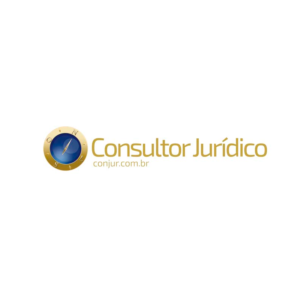Jayme Petra de Mello Neto
Lawyer at Marcos Martins Advogados
Today’s society has become accustomed to the label “Information Age”, designating a complex system of social relations, in all its segments, whose most characteristic feature is the prevalence of knowledge over work. Knowledge, the accumulation of information, data and analysis which, as a consequence, brings more data, more cognizable elements and more knowledge, in a broad sense, has become a socially relevant asset, which necessarily implies an attribution of economicity and legality to such an asset.
It is a fact that if the most precious asset is information, naturally society, acting in an economic determinism, tends to increasingly create tools for collecting and producing such assets, which have become assets in themselves.
Information networks, cyberspace, social networks and virtual interaction mechanisms have become tangible things, with economic value and specific legal protection. In turn, they have ended up determining the emergence of some rights or questioning the effectiveness, enforcement, of individual rights and guarantees of the human person in the face of technological advances and their sensitive implications.
Not without reason, due to the high degree of exposure that these technological tools, environments that are dressed up as a relevant social space where most people “live” after a normal day, the great questioning of new rights or the effectiveness of protection, is guided by the issue of Privacy.
It is not appropriate in this text to discuss the concept of the Right to Privacy. For argumentative purposes, the Right to Privacy will be taken as a broad set of rights and guarantees aimed at preserving the individual’s personal sphere, encompassing the right to exposure, forgetfulness, identity, secrecy and data protection, image, honor and good name.
Whenever any technological mechanism innovates in the social space and creates a greater chance of exposure for the individual, removing or weakening the traditional mechanisms for protecting and safeguarding their intimate sphere, it is necessary to revisit the means and legal remedies available in order to rebalance this apparent antinomy: Information versus Privacy.
At the dawn of the great technologies of exposure, especially when the mass press appeared, a legal discussion was ignited about the possible reflex damages and the Right to Information, as a social good, of a collective nature. Such was the repercussion of the introduction of this new technology that the resulting legal studies certainly created new mechanisms and regulatory paradigms that influenced the traditional legal remedies for recovering damages under the Civil Liability discipline. In an exemplary study, serving as a milestone in the opening of the discussion, Samuel D. Warren and Louis D. Brandeis[1], the latter of whom even went to the US Supreme Court and started one of the most prestigious US law schools, asserted the constant need to review legal mechanisms to effectively protect individual rights linked to personality, especially the Right to Privacy:
That the individual should have full protection of his or her person and property is a principle as old as common law itself; however, it becomes necessary from time to time to re-define the exact nature and extent of such protection. Political, social and economic changes lead to the recognition of new rights, and common law, in its eternal youth, expands to meet the demands of society.[2]
They faced the challenge of legal protection that the new technological forms brought, exposing the individual and private sphere of individuals, demeaning a spiritual, intangible dimension of the human being. Their diagnosis was very relevant:
Recent innovations and business practices call attention to the next steps that must be taken to protect the person and ensure the individual what Judge Cooley calls the “right to be left alone”. Instant photography and newspaper companies have invaded the sacred precincts of private and domestic life; and countless mechanical devices threaten to make the prophecy that “what is whispered in intimacy will be shouted from the balconies” come true.[3] The issue seems to have changed over the years.
Years have passed and the issue seems to have returned to the forefront, demanding a response from the law to the invasion of privacy projected by the new technologies: social networks and cyberspace. The countless episodes of exposure of sexual intimacy, family intimacy, standard of living, wealth, suffering and illness that individuals experience are common knowledge. Furthermore, it has become clear that the tools of the “Information Age” enhance the harmful effects of these invasions, since the great speed and capacity for disseminating exposed privacy is the most important characteristic of these new technological tools.
Brazil recently adopted a law that embodies some of the wishes of digital media users. The Civil Rights Framework for the Internet, Law No. 12.965/2014, also reflects the potential antinomy between Information and Privacy. Article 3, which aims to regulate the use of the Internet, sets out the two rights:
Art. 3 The discipline of Internet use in Brazil has the following principles:
I – guarantee of freedom of expression, communication and manifestation of thought, under the terms of the Federal Constitution;
II – protection of privacy;
Although the protection of privacy is relevant to this law, what can be seen, however, is that most of the other provisions, if not all of them, proclaim the maximum degree of freedom, promoting the wide dissemination and use of the world wide web. Thus, there seems to be a tendency to protect the Right to Information to the detriment of the Right to Privacy.
However, there is a contrary movement in various global legislative and regulatory initiatives that go in the opposite direction to the bulk of the Marco Civil da Internet, protecting the Right to Privacy with greater emphasis. An example of this is the emergence, in business circles and as a consequence of Sustainability, of a series of regulatory documents, some of which even have the force of law, referred to as Fair Information Practices. Good Information Practices reveal a set of actions that need to be taken by the holder or handler of information prior to its disclosure or exposure on the Web.
The leading document of these good practices is the FTC Fair Information Practices Principles, a regulatory model applied by the US Federal Trade Commission, which lists some duties that must be met by the holder or handler of the information before it is exposed. Only if all the principles are met can the information be considered compliant . These are: (i) identification of the collector of the information; (ii) prior identification of the use that will be made of the information; (iii) identification of all potential recipients; (iv) the nature of the information collected and the methods of collection; (v) the voluntariness or casualness of obtaining the information; and, lastly and most importantly, (vi) the precautions taken by the collector of the information to ensure the secrecy, integrity and quality of the information.
This final principle is vitally important given the common use of the Internet, especially in relation to the publication of news. When a particular press outlet publishes a news article that potentially contains information that affects image or privacy in the broadest sense, in traditional media, the tendency was for the exposure to occur contemporaneously with the news itself, and after a while, the file would practically be “forgotten”, unless a person had a specific interest in the topic. However, when such information is disseminated via the Internet, the contemporaneity of the news loses out to the perpetuity that this medium provides. And, more seriously, it makes the information stick to the person at any time and in any circumstance, even if the interested party is not researching that subject.
In this model, information loses the necessary characteristics of the Good Practice model, which requires it to be complete and qualitatively correct. In other words, the outdatedness of perennial information makes it illegitimate, transforming it from useful information in the public interest into an unremedied damage to privacy. An example may clarify the reasoning: Imagine that an Internet newspaper publishes that a certain person is being investigated for committing some kind of crime. This publication, in its contemporaneity with the investigation itself, is usually perfectly lawful, based on freedom of the press. However, after a few years, and because the general public has lost interest, no further news is published on the subject. Therefore, the electronic record or the electronic link to that person’s image will always be that there is or was a possible transgression that he or she may have committed. You could be searching, for example, for that person’s favorite song or color, but the reference to their name will inevitably expose the website that holds the news of the disreputable fact. Thus, over time, information has lost its integrity and quality, violating good practice and necessarily having to be “forgotten” on the web.
This invasion of privacy is particularly relevant for companies in the current scenario in which the market is increasingly moving away from physical space and into cyberspace. A piece of news whose integrity has been lost can cause considerable damage, especially to the company’s commercial goodwill, in which case it is necessary to resort to the Judiciary to remedy this violation of privacy.
Marcos Martins Advogados has acted to curb injuries and re-establish its clients’ rights, in an environment of maximum challenge in the face of technological innovations, which pose cases not yet faced by our Law or Jurisprudence, highlighting our commitment to the updating and quality of the services provided.
[1] WARREN, Samuel D.; BRANDEIS, Louis D. The Right to Privacy. Harvard Law Review, v. 4, n. 5, p. 193-220, dec. 1890. Cambridge: Harvard Law Review Association, 1890.
[Page 193. Free translation.
[3] Op. Cit. Page 195. Free translation.







